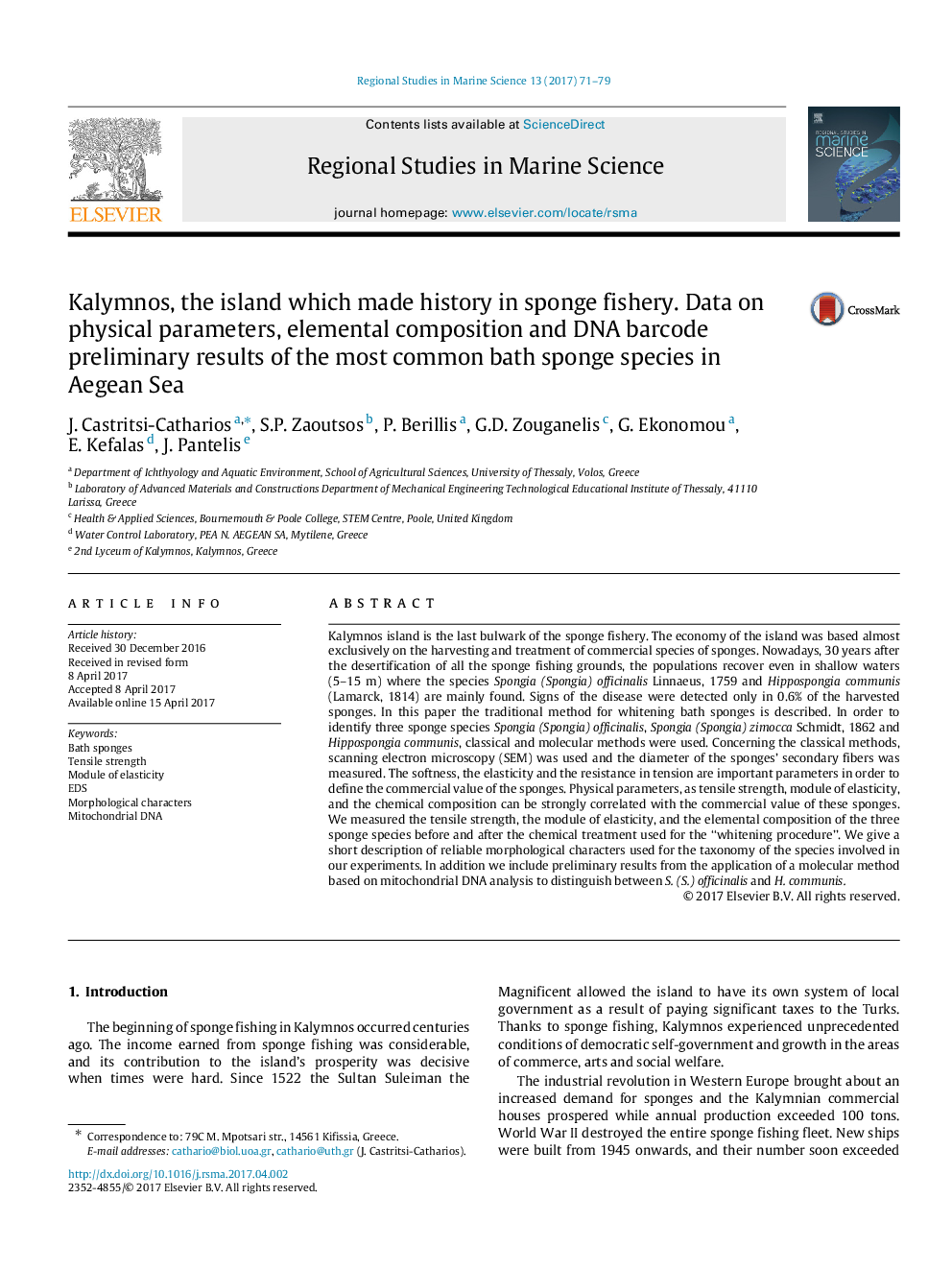| Article ID | Journal | Published Year | Pages | File Type |
|---|---|---|---|---|
| 5758078 | Regional Studies in Marine Science | 2017 | 9 Pages |
Abstract
Kalymnos island is the last bulwark of the sponge fishery. The economy of the island was based almost exclusively on the harvesting and treatment of commercial species of sponges. Nowadays, 30 years after the desertification of all the sponge fishing grounds, the populations recover even in shallow waters (5-15 m) where the species Spongia (Spongia) officinalis Linnaeus, 1759 and Hippospongia communis (Lamarck, 1814) are mainly found. Signs of the disease were detected only in 0.6% of the harvested sponges. In this paper the traditional method for whitening bath sponges is described. In order to identify three sponge species Spongia  (Spongia) officinalis, Spongia (Spongia) zimocca Schmidt, 1862 and Hippospongia communis, classical and molecular methods were used. Concerning the classical methods, scanning electron microscopy (SEM) was used and the diameter of the sponges' secondary fibers was measured. The softness, the elasticity and the resistance in tension are important parameters in order to define the commercial value of the sponges. Physical parameters, as tensile strength, module of elasticity, and the chemical composition can be strongly correlated with the commercial value of these sponges. We measured the tensile strength, the module of elasticity, and the elemental composition of the three sponge species before and after the chemical treatment used for the “whitening procedure”. We give a short description of reliable morphological characters used for the taxonomy of the species involved in our experiments. In addition we include preliminary results from the application of a molecular method based on mitochondrial DNA analysis to distinguish between S. (S.) officinalis and H. communis.
Related Topics
Physical Sciences and Engineering
Earth and Planetary Sciences
Oceanography
Authors
J. Castritsi-Catharios, S.P. Zaoutsos, P. Berillis, G.D. Zouganelis, G. Ekonomou, E. Kefalas, J. Pantelis,
